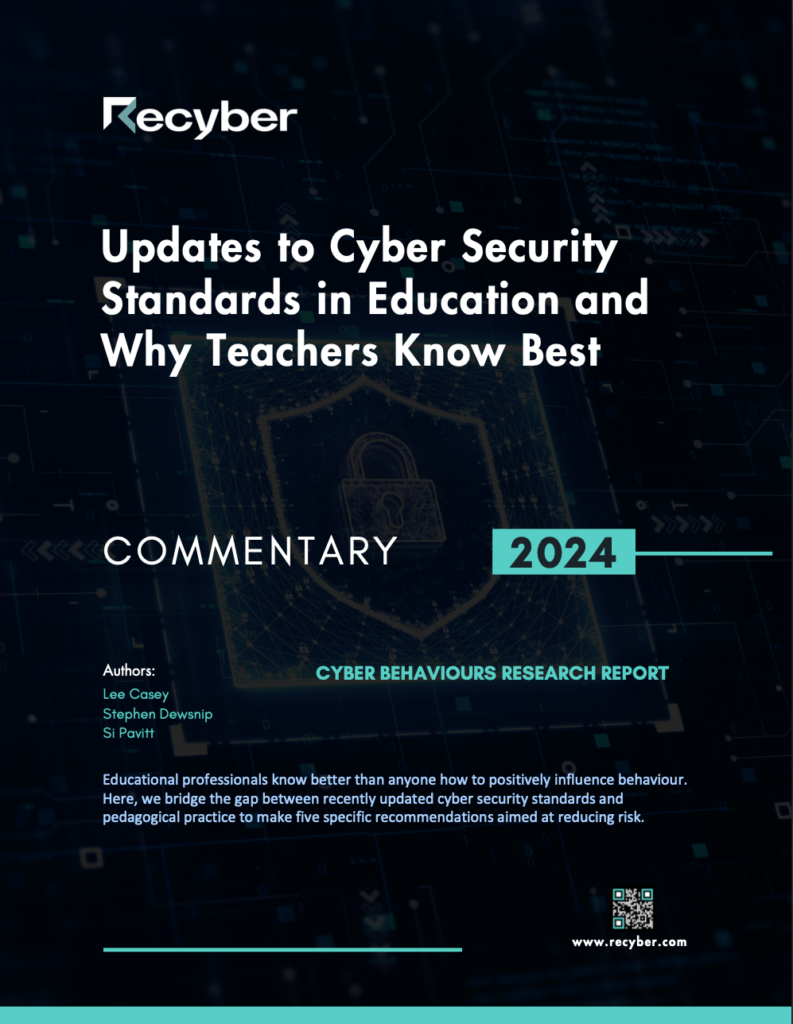Cyber Behaviour Research Report:
Updates to Cyber Standards in Education & Why Teachers Know Best
Educational professionals know better than anyone how to positively influence behaviour. In this report, we bridge the gap between recently updated cyber security standards and pedagogical practice to make five specific recommendations aimed at reducing risk.
-
Researched and written by industry experts
-
Insights from extensive behavioural science research
-
Practical strategies for reducing cyber security risk
2078 Words
Estimated Reading Time: 8 Minutes
Included: Tips for reducing cyber risk in the education sector

Develop cybersecurity programs that provide a psychologically safe space for users to experiment, fail, and learn without fear of blame or punishment.
Move beyond annual training by embedding continuous, daily or weekly security education into regular routines, mirroring the consistent nature of schooling.
Give students and staff access to a range of cyber content and resources that covers the basics, as well as a wider catalogue of information for greater awareness to potential threats.
Develop critical thinking skills that staff and students can apply to a range of situations, enabling them to identify and respond to threats that are not immediately recognisable.
Everybody is different, so individuate your training, content and behavioural change initiatives such that you cover the common bases for everyone while catering to people’s specific knowledge gaps, risk profiles, learning styles and needs.
PREFACE:
The importance of security in schools cannot be overstated
In an era where education has become increasingly digital, the importance of robust cybersecurity measures in schools cannot be overstated. Educational institutions are now prime targets for cyber attackers, aiming to exploit vulnerabilities in their systems to gain access to sensitive information. As a response to this growing threat, the Department for Education (DfE) has recently updated its standards to help schools enhance their security posture.
While these updated standards represent a significant step forward in safeguarding our educational environments, we believe there is still room for
improvement. The document you are about to read delves into these areas of potential enhancement, providing insights and recommendations that can
further bolster the cybersecurity defenses of our schools and those who attend and operate them.
Our aim is not to instill fear, but to equip schools with the knowledge and tools necessary to protect themselves effectively. By considering the guidance and
strategies outlined in this document, alongside the well rounded advice of the DfE, schools can create a safer, more secure digital environment for their students and staff.
We hope this document serves as a valuable resource, empowering
educational institutions to take proactive steps towards securing their digital landscapes against cyber threats.
Fill in the form below to
Read the Full Report

We noticed you're visiting from United Kingdom (UK). We've updated our prices to Pound sterling for your shopping convenience. Use United States (US) dollar instead. Dismiss
